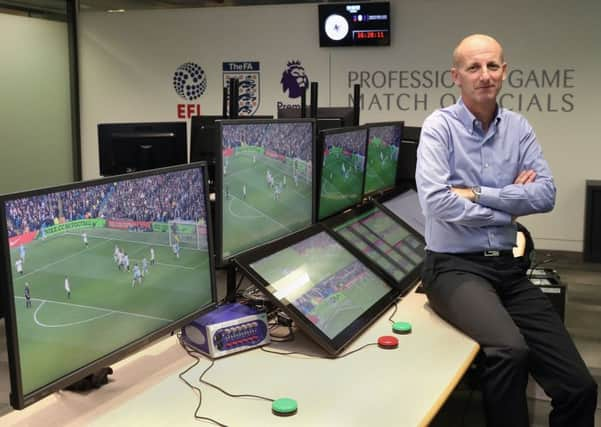Comment: Technology still can't over-rule the human factor


The Eagles’ 2-1 third-round defeat was English football’s first competitive test of the much-called-for Video Assistant Referee and, while it was trumpeted as the cure-all for controversial calls, it did little to sweep away doubts.
It had all been fairly straightforward until the final few minutes when Murray bundled home the winner in contentious circumstances, with some Palace players insisting he had used an arm to get it over the line. Surrounded by angry players, referee Andre Marriner finally had to call for some clarity. But, despite all the claims that VARs would solve just that kind of conundrum, while a dozen camera angles were studied by those in front of screens back at Premier League Productions headquarters, and a decision was forthcoming, it did not prove to be the kind of definitive answer that would quash debate. Therein lies the problem.
Advertisement
Hide AdAdvertisement
Hide Ad“It is hard for them [the officials],” McArthur said, before acknowledging that doubts remained. “We’ve got half the changing room saying it is a goal and half the changing room saying it is not. [Even with VARs] it is not clear-cut. It is one those that will probably not happen like that again but, on the first night, it is so hard to call.”
There is little to suggest such dubiety will not strike again. After all, how many times have TV cameras caught an incident that looks clear from one angle, only for everything to be thrown up in the air when a different angle is shown.
When the International Football Association Board meet on the 22nd of this month, it is believed that they will consider a proposal to have the technology in place for this summer’s World Cup, with the decision to be formalised at their AGM on 2 March. After trials in 15 national leagues, it is understood that it will also be rolled out across other leagues as of next season. That will be greeted positively by some. For others, the fact VARs will not be foolproof means it is a waste of money.
The fact is the technology may help in some circumstances but it will not be a perfect solution to the acrimony that abounds when tackles result in red cards, penalty decisions are disputed and rulings have to be given on handballs etc. The fact is that, even presented with the same evidence, opinions of referees, players, fans or managers often differ.
Watch any game on television and there will be at least one or two notable moments mulled over by pundits, and rarely do those panels of former pros and presenters unanimously agree.
The problem is that so many of the laws of the game are open to interpretation. One man’s excessive force is another man’s robust tackle. While one official or pundit believes an arm to be in an unnatural position, another will consider the player is is trying to lever some height while jumping for the ball.
It is also hard to correctly surmise intent when the only person who can know for sure is the person at the centre of the storm.
Those grey areas throw up issues that VARs are unlikely to resolve. Not completely, not every time. But does that mean employing technology is not worthwhile?
Advertisement
Hide AdAdvertisement
Hide AdAgain it is all about opinions. Hawkeye has taken a lot of frustration out of tennis and TMOs (Television Match Officials) have been hailed a successful addition in rugby.
Cricket and American football have adapted well to the extra eyes and quick replays. However, those sports lend themselves to technological assistance in a way that many believe the more fluid and fast-flowing football does not.
In tennis the decision is simple, the ball is in or it is out. Even in rugby, calls are often being made on more clear-cut issues, such as whether a foot is in touch before the ball is released, or whether the ball has been placed properly over the try line
There are still rulings which can draw boos from the crowd but, in football, such instances are often harder to quantify.
Things happen at pace and, if we are being honest, unlike other sports, there is also a greater con culture in football, where the players often set out to muddy the waters or fool officials.
Technology, though, will help with goal-line clearances and should prove whether a ball has or has not crossed the line. It will pick up more off-the-ball incidents and, hopefully, with so many cameras scrutinising every trip, or feigned injury, it might even plant a seed of doubt in the minds of cheats.
For that reason it had to be worth a try. But there will always be controversies. Because, whether an incident is caught on one camera or 10, at the end of the day, a human being still has to make the decision and I’ve yet to meet one of those who isn’t flawed.